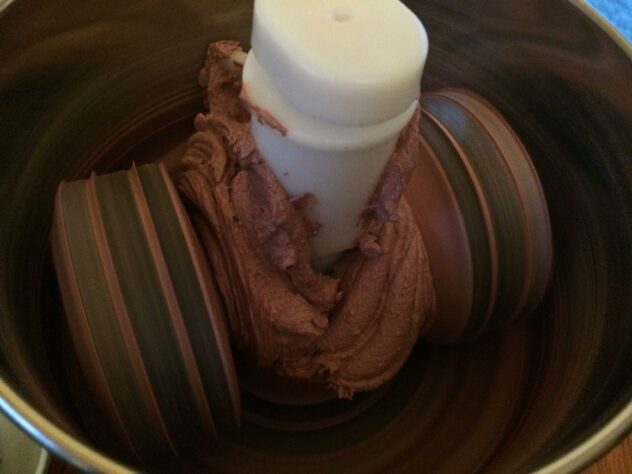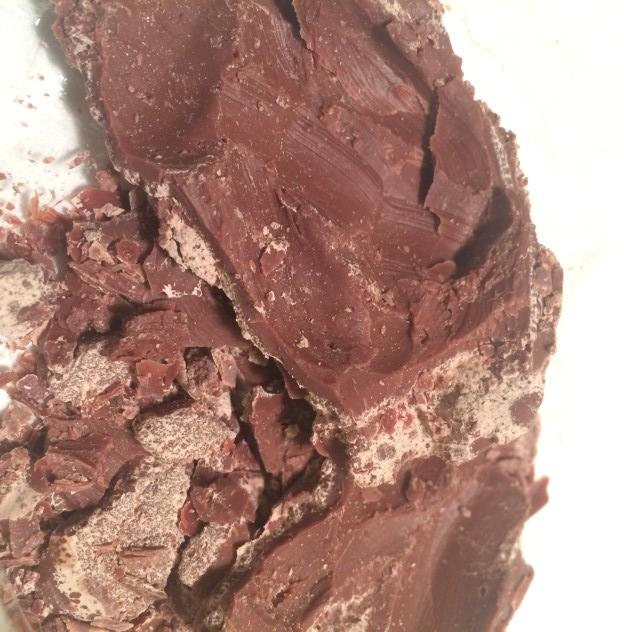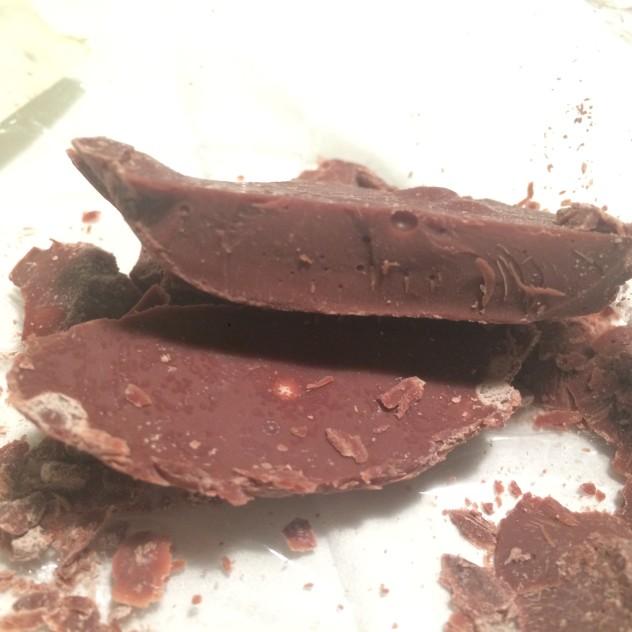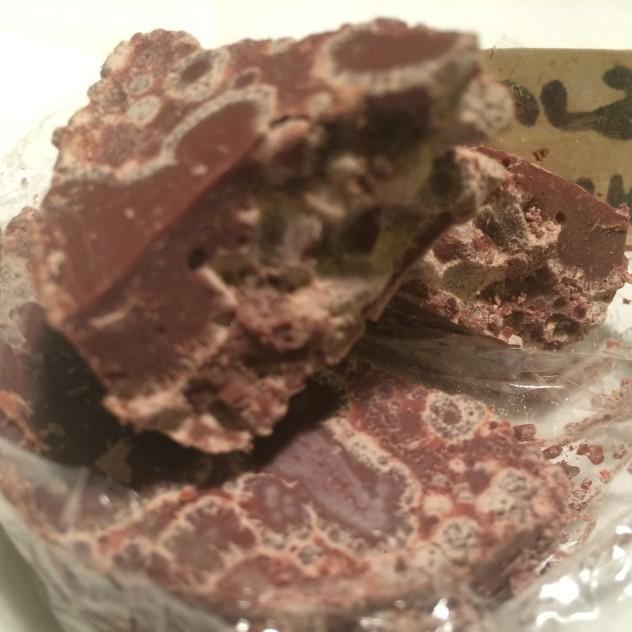On a whim, my first attempt at chocolate making, in January 2016, occurred in three rounds. The purpose of these tests was to figure out which milk powder is best for making milk chocolate at home. These are the results, as well as the ratios if you choose to follow along at home.

Jump To
Building a Recipe For Milk Chocolate
Once I obtained my chocolate ingredients, all at once I measured out three recipes worth of material. One part each of the same four ingredients was necessary: cacao beans, cacao butter, sugar, and milk powder. Like any good experimental chocolate maker, I made sure that all other factors were kept the same in my chocolate.
All the cacao and cacao butter was from the same place & roasted together, all ingredients were added at the same time, all refining was done in the same place, the samples were all removed after a similar length of refining. I roasted all the cacao in two batches with the same roasting inputs.

Now some of you may be asking: why milk powder? Why don't you just use regular milk? That's where we get into the water content of milk and the lack thereof in milk chocolates.
Although milk powders have different percentages of fat, the extremely minimal water content in all of them is the same, and one has only to adjust the recipe based on this fat content.
In addition, if you've ever tried to make hot chocolate with real chocolate, you know that once you add a liquid to melted chocolate, it seizes up and gets clumpy. This is called "scaring" or "seizing" the chocolate. It's also the reason why sugar is generally favored over honeys and other high-water content sweeteners.
My chocolates were all made with the end game of a 50% milk chocolate, and I used plain white granulated sugar, lightly-roasted Peruvian cacao, and Ecuadorian cacao butter, in addition to the three milk powders of choice.
I tested each powder based on the range of fat percentage in them, my previous experience with chocolates made with each type of powder, as well as my expectations regarding how they would affect flavor.
The goat's milk is a full cream at about 25% fat, the buttermilk is unexpectedly lower in fat at 15%, and the non-fat milk is self-explanatory. Just to remind you, I did an even 25% ratio of the milk powders to the other ingredients.
So in the end my chocolates have vastly different fat percentages, with the non-fat milk one having 6.25% less total fat than the goat's milk, though all of them were still edible.
None of them were tempered, due to lack of equipment. And unfortunately, my results were not definitive, and I have come to believe that each powder should be used in different situations, as noted below.
Examples being different bean origins and roasts, or different types of sugar with different water contents. I've also included updated recipes for more ideal ratios of ingredients when making milk chocolate. Here are my results insofar as an amateur chocolate maker & reviewer would interpret them.

Goat's Milk Chocolate
It's very creamy, but it's also got this subtle spiciness and a slight dryness that I only associate with goat's milk. It's also got nice depth of flavor and overall goes down very smoothly, though I would even out this recipe next time by using more cacao and less cocoa butter, maybe upping the total percentage to 60% cacao.
I'm happy with it, though, and think that it mellowed out nicely after a few weeks of resting. Would make again.
Better Recipe: 50% Goat's Milk Chocolate
- 500g of cacao nibs
- 500g of cocoa butter
- 400g of goat's milk powder
- 600g of sugar

Buttermilk Chocolate
Primarily characterized by an impressively creamy mouth feel, it is also very sweet with a much lighter chocolate flavor when compared to the others. I have a feeling that this would appeal to kids the most, and would do well with any percentage of cacao, though I'd probably go lower to try to appeal to those with an overactive sweet tooth.
To dull but not lose the sweetness, I'd love to experiment with different kinds of sugar in here; in particular coconut sugar or honey powder sounds appealing, as a way to raise the cacao percentage & flavor punch, while lowering sugar content but not losing overall sweetness.
Better Recipe: 50% Buttermilk Chocolate
- 500g of cacao nibs
- 500g of cocoa butter
- 400g of buttermilk powder
- 600g of sugar

Non-Fat Milk Chocolate
Some strong cocoa notes, but still not as much depth of cacao flavor as the goat's milk. There are flashes of some other flavors, maybe fruit, but it's just all buried under so much sweetness and fat.
I could see its use with a more distinctive or uniquely-flavored cacao, as a way to make sure that the flavor notes in that particular cacao are shining to the best of their ability.
Especially with notably nutty or especially acidic cacao, I would use this to dull the sharpness of the beans and remind people of the appeal of a milk chocolate that doesn't take advantage of sugar's sickly sweet appeal. I would stick to granulated white sugar when using non-fat milk powder.
Better Recipe: 50% Non-Fat Milk Chocolate
- 400g of cacao nibs
- 600g of cocoa butter
- 400g of non-fat milk powder
- 600g of sugar

The amazing thing is that even at 50% cacao, the only one with flavor notes beyond "sweet" and "creamy" and "cocoa" was the nonfat. It may just be the overwhelming fat content, but they were just still so sweet!
Any percentage below 50% now seems incomprehensible to me as anything other than a carrier for sugar. But I guess that means I'll just have to tweak the recipe! This buttermilk chocolate is still one of my favorite desserts with buttermilk, though I've yet to repeat the experiment.
What chocolate making recipes do you use milk in? Would you ever replace it with milk powder?

















Neha
which brands of milk powder you have used so far
Max
This was almost 10 years ago, so I'm sorry, I don't remember the exact brand of the non-fat milk powder or buttermilk powder, but for the goat milk it was the Meyenberg Goat Milk Powder.
Trisha
Hi- what are the instructions for making chocolate with goat milk powder? Thanks!
Max
Hi, Trisha! You'd need to have a small countertop chocolate refiner running for a day or two straight in order to get the chocolate's texture right, but you just add all those ingredients in the order specified in the post under "Better Recipe: 50% Goat’s Milk Chocolate" with each one added 10-15 minutes apart.
Belle
I made this tonight and it was really delicious. It turned out much smoother than any batch I've made so far. Great recipe. Thanks.
Max
You're very welcome! I'm glad it came out well.
bianca
Hi there, I am about to start a chocolate making experiment and I have two questions. 1. Do you have a process / recipe for making the chocolate I can follow - like when to add the milk powder etc.
2. Have you ever tried to use non dairy milk powder like coconut milk powder.
Max
Hi, Bianca! Yes, I'd recommend heating up your refiner with a hair dryer, first, and then microwave your cocoa butter until it's melted. Add the ground nibs next, and then refine for about an hour. Add the sugar and milk powder last. Any inclusions should mostly be added in the last few minutes of refining. I have used coconut milk in making white chocolate, and I've had good results. Make sure that your coconut powder has the same solid to fat ratio as the milk powder it's replacing, and it will work just fine. From there, please tweak these recipes to your heart's content! They're just a guide. 🙂
Lorraine
Hi i just made some chocolate first attept and it seem that the powder milk wouldn't dissolve. The chocolate turned with lost of tiny pieces and i tested the milk and realised that it was the powder milk. Is there any powder mild de should avoid or may je i miss some thing in the process.
Thanks for your answer.
(Sorry for any miss spelling as im more french then anything else lol) on a french phone that correct my spelling every word.)
Lorraine
Max
Lorraine, I'm glad you are interested in making chocolate! When making chocolate, the milk powder won't dissolve; it will be ground into smaller particles and surrounded by small particles of cocoa butter. This is what makes the chocolate taste so smooth in your mouth. It's possible you used too much milk powder in your experiment, or maybe you used a milk powder with too high moisture. Maybe try a fat-free milk powder, in smaller amounts than before?
[And your English is fine! I understood everything :)]